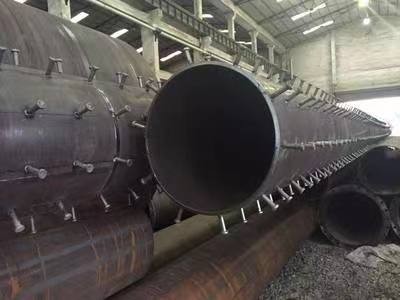Jan . 29, 2024 09:52 Back to list
Welded Steel Pipes-HOW TO CUT STAINLESS PIPE
The characteristic of stainless pipe
Stainless steels are highly alloyed materials; Stainless Steel is a common name for metal alloys that consist of 12% or more Chromium (Cr) and more than 50% Iron (Fe). Modern stainless steel pipe may also contain other elements, such as nickel, niobium, molybdenum, and titanium. Nickel, molybdenum, niobium, and chromium enhance the corrosion resistance of stainless steel. It is the addition of a minimum of 12% chromium to the steel that makes it resist rust, or stain ‘less’ than other types of steel. The chromium in the steel combines with oxygen in the atmosphere to form a thin, invisible layer of chrome-containing oxide, called the passive film.
Metal welding services
The challenge of cutting stainless pipe
All metals works harden when cold worked. Stainless pipe have hardening characteristics as well. When the stainless pipe,stainless tube cutter contact the surface of stainless steel pipe, it will harden and will be more and more difficult to continue on cutting with the same pressure and speed. The chromium and nickel content makes it more difficult to cut or torch than regular carbon steel. Austenitic stainless steels pipe harden very rapidly, but the 400 Series’ cold working rate is only a little higher than that of the plain carbon steels.
When cutting the stainless pipe /stainless tube, if the stainless pipe/stainless tube becomes over heated while cutting, the stainless pipe/ stainless tube will discolor, turning a blue color from the heat tempering and if the stainless tube is thin enough, it can distort the stainless material.
Generally speaking stainless pipe/stainless tube is a nonferrous metal. This makes the stainless pipe/stainless tube very difficult to cut and drill with conventional tools. The different stainless pipe grades, as well as the thickness of the stainless pipe, increases these difficulties
The conventional steps to cut stainless pipe straight and burr-free
To achieve a burr-free and straight cut, conventionally, the following steps have been taken to cut stainless pipe
- Cut the tubing
- De-burr the pipe using a bench grinder stone wheel
- Clean the edges of the tube with wire wheel on bench grinder
- Using a sander, sand the tube so its flat
- Clean again using a wire wheel
- Then TIG it connecting to the other pipe
Sometimes some of those steps need to be done twice or more just to make sure its flat and burr free. It is very time consuming to do this.
Two recommended methods to cut stainless tube
Stainless pipe can be fabricated by methods similar to those used for carbon steels and other common metals. However, changes may be necessary to the extent that they differ in yield strength and rate of work hardening.
METHOD ONE, SAW GUIDE COMBINED WITH PORTABLE BAND SAW

The portable Band Saw cutter must be sturdy, have sufficient power. The Saw Guide helps eliminate the vibration when cutting stainless pipe. Constant feeds are most important to prevent the tool from riding on the stainless pipe.
METHOD TWO, ORBITAL PIPE SAW
For cutting and beveling stainless pipes, orbital pipe saw is another good choice. The saw blades rotate at high speed, are small, inexpensive and available in different versions for different materials and wall thicknesses.

The cutting is executed by manually rotating the machine housing 360 degree around the pipe and then, with a circular toothed blade driven by 1600 watt motor, the pipe is cut with one single rotation. The cutting action takes seconds, and cut-off is straight and clean
-
High Quality Mild Steel Pipe Manufacturers in China for Exporting Premium Industrial Solutions
NewsAug.01,2024
-
Exploring Key Characteristics of Wholesale API Steel Pipes for Your Business Needs
NewsAug.01,2024
-
Current Wholesale Prices for ERW Steel Pipes in the Market Right Now
NewsAug.01,2024
-
Exploring the Diverse Applications and Benefits of China Round Steel Pipes in Construction and Industry
NewsAug.01,2024
-
Top Quality API 5L ERW Steel Pipe Manufacturer Offering Reliable and Durable Solutions for Your Needs
NewsAug.01,2024
-
Reliable Supplier of Premium Quality Concrete Pipes for Durable Construction Projects
NewsAug.01,2024
